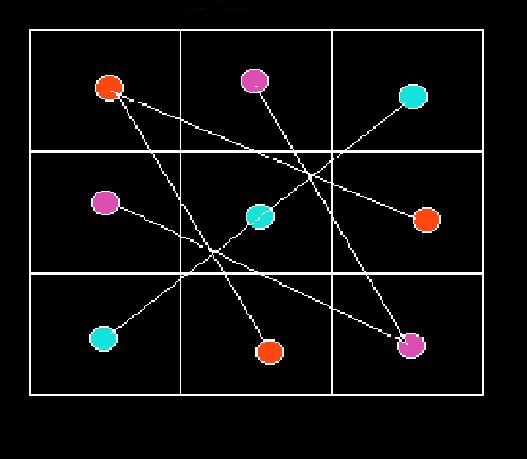- Magic squares can be produced using diagonals in which one of the squares is negative, i.e., (−a2,b2,c2).
We define a tuple (ai, b, c) as a major diagonal sequence of a magic square, prior to squaring, where the initial
number in the tuple is imaginary.
- It will be shown that several different types of these diagonal sequences are possible.
- In the first type, all tuples can be generated using two general tables one for odd numbers and the other for even ones shown below.
- In a second type, the tuples are generated from the set of all squares and the set of all squares doubled. See Part IIA.
- In third type an infinite number of tables of tuples is generated, using a subset of squares and squares doubled from ii above, where the differences
between the numbers c and a, i.e., (Δc-a)
allow for only certain values. See Part IB , Part IC , Part IIC ,
Part IIIC , Part ID and
Part IE .
- In the fourth type, new subtables within the original tables are generated, which when factored have a different
Δc-a.
- The method for the generation of these tables is simple and not as complex as that which was used in
Table of Right Diagonals.
- The Diagonal tuple may be of two types:
(a) (-n1i,0,n2) where
n1 and n2 are integers, n1 = n2 and can range from 1 to ∞
(b) (ai, b, c) where a,b and c are integers obtained from the equation:
c2 = a2 + 2b2
- Using the new method using diagonal types of (a) produces an infinite number of magic squares of squares containing seven squares.
The use of diagonal type (b), on the other hand, produces to date four magic squares of squares containing seven squares.
Both types (a) and (b) are included in the next group of pages.
- It will also be shown that we can convert a new set of allowed tuples (in a sequence) into the next higher set by taking the average values of a,
b or c, within a table, and converting to the average values aavg*
bavg* or cavg*
of the next higher set, within another table. That is converting all the numbers in the tuple:
(aavgi, bavg, cavg) →
(aavg*i, bavg*, cavg*)
to the next higher tuple by multiplying by the newly discovered ratio (1 + √2)2 = 5.828434...,
which I call the magic ratio (R) with an x:
xn+1 = xn × 5.828434...
where x is a placeholder for a, b or c:
xn+1/xn ≈ 5.828434...
Furthermore, the ratio approaches (1 + √2)2 as the numbers xn+1 and xn get bigger and bigger.
This brings to mind the ratio of the adjacent numbers of the Fibonacci sequence:
Fn+1/Fn ≈ ½(1 + √5) = 1.6180339...
which is generated instead by a sum of adjacent numbers which approach the golden mean as the two numbers get bigger and bigger.
(As an aside 5.828434... plus its inverse, i.e. R + 1/R = 6, is a root of the equation x2 -6x + 1 just as 1.6180339... and its inverse
are roots of the equation x2 -x - 1). See The use of Ratio(R) for converting tuples (1,bn,cn) into (1,bn+1,cn+1).
- Alternatively we can look at the conversion of one tuple into another by the use of a geometrical progression:
xn × R, xn × R2, xn × R3,
xn × R4...
where R is a common ratio and the higher values approach the true values of x as x gets bigger and bigger.
Three sequences based on a, b and c are shown in Part IVF.
- We can generate sequences from the table lines by employing two other novel geometric progression and recursion methods, Part VF,
much simpler tha the previous method. The methods only require the initial number for the geometric progression and only the first two numbers from the tables
to generate the sequences without resorting to extracting the values from the tables. The tables are then used only for comparison of the numbers with the
calculated sequences.
- The new table of right diagonal employing imaginary numbers and the new magic ratio (R) are listed in
Part IB , Part IC , Part ID and
Part IE .
-
In addition, it will be shown that in a tuple, (ai, b, c), a, b and c take on certain allowed values.
Furthermore, b is always positive and the differences between a and c take on only certain allowed values.
See Part IB , Part IC , Part ID and
Part IE .

